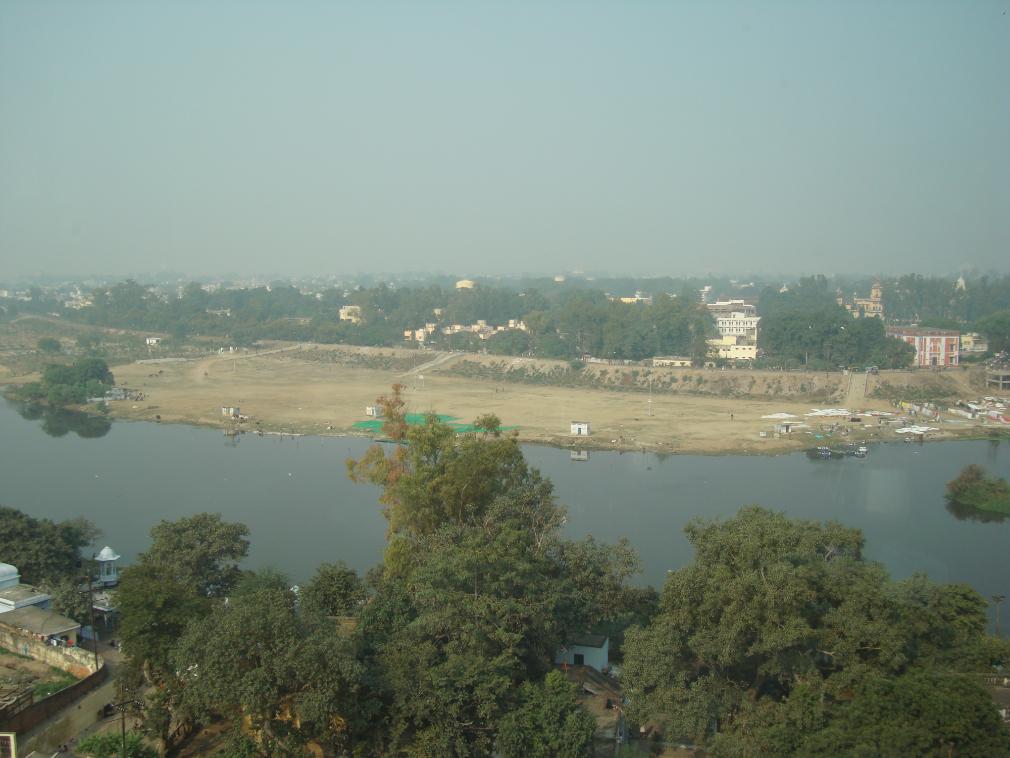- Shri Naimishnath Vishnu Temple, also known as the Naimishnath Devaraja temple or Naimishnarayan Temple or ramanujar kot Temple is a Hindu temple dedicated to Vishnu and lakshmi located in the north Indian state of Uttar Pradesh in naimisharanya town in sitapur district.
- It is one of the Divya Desams, the 108 temples of Vishnu revered in Nalayira Divya Prabandham by the 12 poet saints called the Alvars.
- The temple is believed to be of significant antiquity with contributions at different times from the ruling kings.
- The temple is counted as one of the eight temples of Vishnu that self-manifested and is classified as Swayamvyaktha Kshetra.
- This kshetram is said to be one of the 8 swayam Vyakta kshetras. The other swayam Vyaktha kshetram are Sri Rangam, Srimushnam, Salagramam, Thotadri (Vaanamamalai), Tirupathi, Pushkaram and Badri.
- This Naimisaranya kshetram is said to be regarded as "Tapovanam".
- There are 9 tapovams.
- They are Dandakaranyam, Saindhavaranyam, Jambhukaranyam, Pushkararanyam, Utpalaranyam, Badrikaranyam, Gurujangalaranyam, Aruputharanyam and Naimisaranayam.
- It is believed that the perumal is found in the form of forest and this Naimisaranyam is regarded as a holy forest.
PURANIC SIGNIFICANCE 1:
- In the old age, all the MahaRishis along with Sownakar went towards Brahma devan and asked him which is the best place suited for doing Yagam and tapas.
- As the answer, Brahma devan took a dharbai grass and made it as a wheel shape and rolled the dharbai grass.
- Brahma devar said after he rolls the grass, the place where it stopped is said to be the ideal place for doing tapas and yagam.
- He rolled the wheel and it stopped at a particular place in the Earth and that place is said to be the place which is called as “Naimisaranyam“.
- Nemi means a Wheel and Naimisam means the place where the wheel landed. Aaranyam means forest.
- Since Nemi, the Chakkaram which landed on Aaranya the forest, the sthalam is called as “Naimisaranyam“.
- This Naimisaranyam is said to be the place where most of the Rishis have done sacrifices, tapas and meditation and have explained the meaning of old puranas and veda.
- The Lord Emperumaan gives his seva as in the form of Nature.
- This sthala emperumaan, gives his seva with the name as “Sri Hari” along with Sri Hari Lakshmi and gave his audience (pratyaksham) to Devendran, Sudharma, Devarishis, Soodhapuranika and Vedavyasa.
PURANIC SIGNIFICANCE 2:
- Once, Balarama, the brother of Sri Krishna came to this kshetram.
- At that time, Soodhar was very busy creating puranas. He didn’t notice the arrival of Balarama.
- On seeing this, Balarama got angry and hit him.
- He got into sin by committing this.
- To get out the sin, he went to lots of Punya kshetras for an year and finally he came back to this kshetram and help the rishis and yogis, who were suffering from the frightening of a arakkan (Demon) by named “Vilvalan”.
- All the rishis and yogis thanked Balarama for making them perform austerities, tapas in peace to reach the Emperumaan.
PURANIC SIGNIFICANCE 3:
- Gayasooran, an Asura, did tapas in this sthalam.
- Sriman Narayanan gave His audience to him as he was fulfilled by his tapas.
- Sriman Narayanan asked him what boon he wanted as a result of complete tapas. But, Gayasooran answered the Almighty that he didn’t want any boon from him and he was so much more powerful than Sriman Narayana.
- On hearing this, Sriman Narayana sent his wheel (chakra) to kill the asura and his body was cut into 3 parts.
- The three parts are the Siro Gaya, (the head part), the Nambi Gaya (the middle part) and the Charana Gaya (the foot part).
- This sthalam, the Naimisaranyam, is said to be the Nabhi Gaya.
- The Gaya Kshetram is said to be the Charana Gaya and Badri is said to be Siro Gaya.
- Offering prayers to departed souls in all these three sthalams is said to be so grateful.
PURANIC SIGNIFICANCE 4:
- Devarishi Narada was searching for the best Theertham in all the three Lokas.
- He first came to Kailash, the abode of Bhagavan Shiva,then to Parkadal (Ksheera Sagara), the abode of Bhagavan Vishnu and then finally to this famous place.
- It is at this place that Indra, the king of the Devas, killed the asura Vritra with the Vajrayudha made from the spine of Maharishi Dadhichi.
- Once,all the sages along with Rishi Saunaka were looking for a place to perform their rituals.
- Brahma made a ring out of Darbha grass and asked the sages to follow the ring where it fell.
- The sages came to this very spot and prayed to Vishnu who accepted their offerings.
- This is the very place where the sacred Vedas were categorised into Rig, Yajur, Sama, Atharva and eighteen famous Puranas were composed.
7de832.png)
